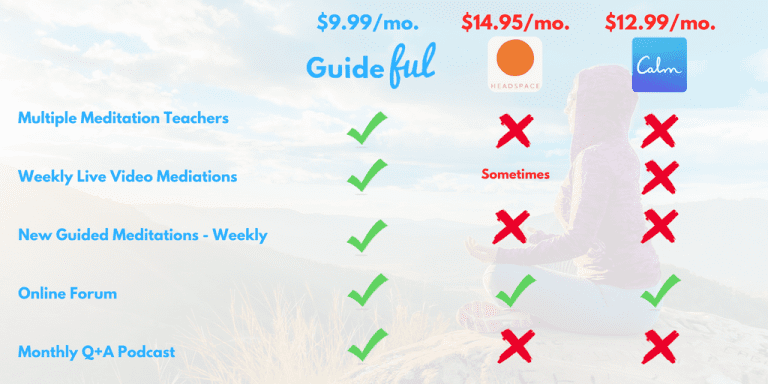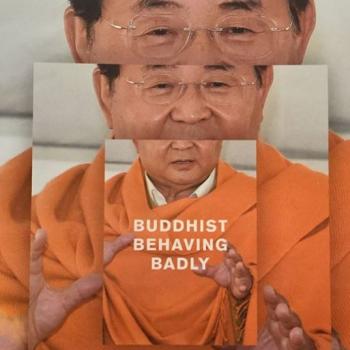Mindfulness: Where We Are
There is no escaping it. Mindfulness is everywhere these days. And while it hasn’t hit the cultural saturation of meditation and yoga just yet, it is steadily on the rise (as shown in this Google NGRAM viewer, which goes through 2008):
Mindfulness, while still lacking a single widely accepted definition, is a quality or skill being sought out more and more in today’s fast-paced and heavily distracted world. The founder of Mindfulness Based Stress Reduction (MBSR), Jon Kabat-Zinn, defines mindfulness as: “Paying attention in a particular way: on purpose, in the present moment and nonjudgmentally.” Others who teach mindfulness emphasize the importance of peripheral awareness in the practice; noting that it’s not just that we’re attending to our breath or another object, but that we also have a growing sense of awareness of the world around us, both inner and outer, as we do so. Many Buddhists insist that mindfulness must be understood within the complex system of thought and practice laid out by the Buddha 2500 years ago.
McMindfulness vs the Mindfulness Movement: how we got here
Having practiced meditation since 2000 in a wide span of Buddhist and non-Buddhist traditions, I was first introduced to modern mindfulness by the excellent article, “Beyond McMindfulness” by Donald Purser and David Loy. That article went viral, leading to a number of responses, both for and against the growing interest in the new mindfulness movement. I summarized those in one of the most popular and commented upon posts on the blog, “Mindfulness: Critics and Defenders.”
At the time, I was deep in my Ph.D. work on Buddhist ethics and the ethical angle stuck with me. Part of one very common Buddhist formula suggests that mindfulness (sati) is just one part of meditation (samadhi) which must be practiced with a foundation in ethics (sila). The worry, articulated by Purser and Loy, as well as others such as meditation teacher Christopher Titmuss and scholar John Dunne, was that without a foundation in ethics, mindfulness could be used for harmful ends; e.g. the mindful sniper, tax evader, or thief.
Others have argued that ethics cannot be taught because their are simply too many ethical teachings to choose one from the Buddhist tradition. Or that teaching ethics might upset students who dislike the term due to cultural conditioning.
For two years, I sat back as mostly a student or scholar of the debates, sometimes chronically what I did see as gross ethical violations by companies pushing mindfulness (e.g. Google: Mindful of your immorality?). I’ve also turned my scholarly work more in the direction of the intersections of meditation and morality, writing a paper comparing Buddhist loving-kindness meditation to Catholic/Ignatian examen practices (2009/14) and another looking at mindfulness, right-mindfulness and ethics in early Buddhism (2015).
Teaching Mindfulness and Guideful: where we’re going
In 2016, with my Ph.D. approaching completion and some new time on my hands, a couple people suggested I offer some meditation classes. After years of teaching Buddhism, philosophy, and world religions, I knew some training would be needed to transfer those skills, along with the 15 or so years of practice, into a proper (ethical) context for teaching meditation. I took a short course offered by Aura Wellness Center to become a Certified Meditation Teacher, and explored the many other offerings out there, including this online 8-week MBSR course, which can be taken for free. These, along with other online resources, gave me the language and pacing for an in-person class, which combined with my years of academic teaching and meditative practice formed my first class on mindfulness in April-May of 2016 at my friend Nicky’s yoga studio, Hot Yoga Helena. After two successful classes there, one filling beyond capacity, we moved to the Reeder’s Alley Convention Center, hosted by another friend, Marisa of MerlinCCC, a non-profit dedicated to improving people’s lives through philosophy.
In that class was Bob Funk, a man who had utilized meditation in his work to overcome anxiety and panic attacks (as I had in my early 20s). Bob’s passion for helping people with anxiety led to his founding the Awareness Network, a non-profit dedicated to helping teens in particular who struggle with anxiety and related conditions. Part of his work there included evaluating and giving out mindfulness apps, and he saw a flaw in existing apps: they are one-directional, users just download and listen at their leisure, which often leads to poor retention rates (think MOOCs if, like me, you’re more familiar with higher ed).
He wanted to develop a platform (both app and web-based) for meditation teachers to offer guided meditations, live teachings, and Q&A Podcasts as well as interactive discussion forums where participants could discuss their progress and difficulties with one another and guides who could help them along. He appreciated that my courses spent a lot of time on in-person sharing and discussion, building relationships and bonds on the road to mindful living.
And thus arose the idea for Guideful. Over the last couple months, Bob and I have been ironing out details in the coming platform. We still have work to do, but so far, it looks a bit like this:

Part of our goal is to provide what some others are already doing, but do it much better and at a lower cost to participants.
But more importantly, to me, it also looks like this:

Our community of guides already spans the globe and comes from a wide variety of backgrounds and meditative traditions. We will be building on this, too, as we go, to make sure that everyone who starts out on their meditative journey with us can see themselves in a guide or two, and thus feel empowered and encouraged on the journey ahead. Meditation isn’t easy. Any app or teacher who promises you otherwise should be avoided. It takes time and encouragement and interaction. This is something we hope to offer where others can’t.
We will be interactive and will grow with the meditation community around us.
Radically, I suppose, we don’t have a 10, 5, or even a 1-year plan. Our plan is to grow with you, our supporters, participants, and guides. “Community” (Sangha in Buddhist terms) is for me the guiding light in this. And, as I have observed before, community is messy. Guidelines and principles will be put forth as we go, and your feedback will be encouraged every step of the way.
For now, I suggest you see our site at www.guideful.org and the IndieGoGo campaign to jump-start our work. We aren’t reaching out to venture capitalists but instead relying on people who will use the platform or those who simply support it for small contributions that will add up to enough to get us off and running. But that means that we need you, any amount, small or large, will mean the world to us and won’t be forgotten.
Support independent coverage of Buddhism by joining a community of fellow learners/practitioners at Patreon.
‘Like’ American Buddhist Perspectives on facebook.












